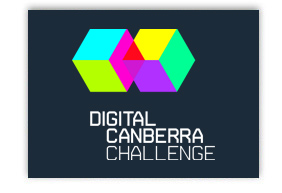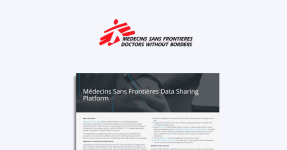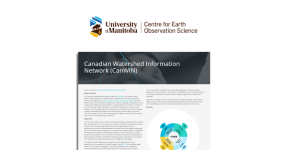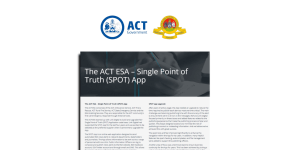Link Digital has been selected to work on Round 3 Challenge 1 of the Digital Canberra Challenge. This is tops, but first let me share some of the information on the Challenge as sourced from digitalcanberrachallenge.com.au.
What is the Digital Canberra Challenge?
It is an ACT Government initiative to engage Canberra’s brightest minds to help build and support a dynamic, healthy and prosperous Digital City for the 21st century.
What is Round 3, Challenge 1?
To create a whole of government image and video library which can be used not only by ACT Gov employees but the private sector and the public. The image & video library would ensure consistency across the service & reduce costs for a number of items including data storage, ability to browse and share, licensing and talent arrangements, copy right and acknowledgment, archiving and staff resources.
And the desired outcomes are?
A whole of government image & video library that can be accessed by all Directorates which provides consistent images used to promote CBR and ACT Government services. It should be user friendly with different accessibility for specific projects, ACT Gov and the public.
So this was the challenge set for Link Digital. Having some skills and passion in the area of open data, and being big fans of #CBR, we wanted to meet it head on with what we’ve named a Data First Media Platform. This is something we’d been thinking on for some time, so it was already in our vernacular as the “DFMP”. When working with Government, having a strong acronym means the job is already pretty much done ![]() But, here is a bit more info to fill the gaps on what the DFMP will deliver for ACT Government, as per our original submission.
But, here is a bit more info to fill the gaps on what the DFMP will deliver for ACT Government, as per our original submission.
OUR SUMMARY OF THE CHALLENGE:
To create an open data repository of #CBR images and videos that is open for submission and open for access to everyone. Content within the repository will be identified via standardised metadata to respect provenance, access and allowed usage rights.
We aim to create a constant stream of content which is drawn from a number of sources, not just uploads from agencies or individuals who opt into becoming a contributor. We aim to create a friction-less image collection and retrieval platform that is ready for integration with other applications.
Our vision is that the visual life of the city can be collected in real time and made available for anyone wanting to dive into the stream of content for any use, just so long as that use is in alignment with the rights attributed to the content they are requesting.
We understand that friction-less and open capture and storage capability for media is only one part of the platform. We will also create an intuitive upload capability for the primary users and a creative visual search method for those seeking awesome images to highlight the diverse and rich destination of #CBR.
We also understand that to reduce costs for running the platform, especially with regard to media storage, the platform would utilise the commodity public cloud pricing of Amazon Web Services.
Considering this against the general selection criteria of:
- More effective government services; and/or
- Better access to government or public information.
Our understanding is that an open data platform creates an economic good with the dual benefit of unlimited multi-tenant users and n+1 reuse of media items that might otherwise be created for a single primary use. Providing universal access to this media content creates the opportunity for private-public goods to be created within secondary markets to grow the economic value of the platform. That may
result in higher value public or social goods, but it can also result in innovative commercial goods that benefit multiple sectors within the ACT economy.
By having core functionality centralised around low cost media storage, attribution, governance and access services, the ACT Government investment targets only the essential parts of service delivery. It provides for a core platform around which innovative people and organisations can attach additional services to meet specific needs over the long term.
OUR CONCEPT OF HOW TO ADDRESS THIS CHALLENGE:
The core technical components of our proposed platform are:
- CKAN – the world’s leading open data catalogue software used by data.gov.au, data.vic.gov.au, data.sa.gov.au, data.nsw.gov.au (all clients of Link Digital) and many others around Australia and the world.
- Amazon Web Services (AWS) – specifically for S3 storage of media assets, but also for the use of Glacier, which is a very low cost solution for archived media. We will also use AWS for the web application hosting. Link is a consulting partner of AWS and has a great deal of experience establishing low cost solutions which make use of cloud hosting in way which provide exceptional value for money. We are currently hosting 11,000 hours of video content on AWS for one of our clients and can leverage video transcoding and playback technology developed for that project.
- Drupal – this will be used to provide user registration and form submission with a user experience suitable for the primary users. It should be noted that API access via CKAN means that anyone can create a new approach, but we’ll demonstrate this as part of the initial build via Drupal. Drupal will also be used to provide a visual search and Apache Solr based faceted search capability for the content that is stored within the CKAN repository.
All software will be open source. The only ongoing cost will be the AWS hosting fees.
As the repository will be 100% available via API for both read and write access, the use cases supported by Drupal can be improved upon or recreated via other approaches led by community efforts. Integration with digital asset management systems and other third party platforms can be achieved with minimal effort.
Where to from here?
Well, after being selected as a finalist and then pitching our approach, we were asked a few questions on why we wanted to get involved and whether we thought Canberra was a good place for the kinds of innovation these set challenges are attempting to stimulate. Video responses are embedded below. However, from Link’s perspective we are very excited by this challenge and have a lot of ideas on how to make the DFMP a great platform for anyone who wants to create an open media repository.








